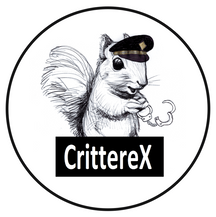Serving Hudson Valley and the Surrounding Counties
Unprotected Bird Services
24-Hour Turnaround Time
1-Year Warranty
Emergency Services Available
Request Call Back
Hero Request Form
Thank you for contacting us.
We will get back to you as soon as possible
Please try again later
Birds, Unprotected by North American Migratory Bird Treaty Act
What are the three exotic species, you may ask? European starling is a robin sized, short tailed glossy black bird with light speckles (male), the female has less color and more cream color at the tips of their feathers. In winter these birds get duller. They have pinkish-red colored legs.
House sparrows are 6 ½ inches long and both genders are mostly brown with black streaks while the males have a black throat-bib flanked by white spots. Don't confuse this house sparrow with the similar protected chipping sparrow, the grasshopper sparrow and the song sparrow.
Pigeons are 12 inches long and weigh 12 to 17 ounces. They typically are blue-gray with 2 black bands on their wings and 1 black band on the tail contrasting its white rump. Color morphs range from mottled brown to sooty black. They are larger than the tawny-brown mourning doves that are native to the US and protected by fed and state regulations.
Call (845) 219-5141 today and a Critterex representative will assist you.
-
Are they dangerous?
No obvious danger is posed by these exotic birds, but their droppings can facilitate Histoplasmosis. Symptoms of Histoplasmosis are fever, cough and general symptoms like a prolonged influenza. Highly sensitive lungs may result in a fatal acute allergic reaction. In a small percentage of Histoplasmosis cases, the fungus spreads to involve multiple organ systems and could be fatal, usually to young children and adults with compromised immune systems. Diseases House Sparrows carry are encephalitis, salmonellosis, psittacosis and various parasites. Starlings carry encephalitis and ornithosis. Pigeons may spread Newcastle disease and cryptococcosis.
-
Signs:
Bird droppings are easily noticeable by tell-tale signs of white stains. These droppings are acidic and accelerate deterioration of the outside of your home, garage, or buildings. Accumulated droppings can plug up roof gutters causing water damage and in ceiling can result in ceiling collapse. Nests obstruct exhaust vents creating a fire hazard. House Sparrows and Starlings compete with local birds for food and nesting areas. They consume livestock feed and contaminate it with feces facilitating disease and contamination. Starlings damage cultivated orchards seeking grapes, peaches, apples and bushes with berries etc.
-
How do you get rid of them?
If Starlings, House Sparrows and Pigeons have become a problem on your property or inside of your home, contact us. We can discourage them from taking over your property with several humane and chemical-free control methods. Preventative measures like removing food sources, cover containers, reduce available water by repairing leaking faucets and clearing gutters. Pruning of dense trees will discourage roosting sites.
We Are Licensed by the Department of Conservation
There is No Better Place to Turn to Than Critterex
Call Us at the First Sign of Unprotected Birds on Your Property
(845) 219-5141
Reviews
Related Services
Great job helping me navigate a snake in my house.
- Bond A.
Learn More About
Critterex LLC
Serving Hudson Valley, NY and the surrounding counties. Critterex specializes in wildlife removal, exclusion, home inspection, home remediation, and leaf gutter guard installation. 24-Hour turnaround time. 1-Year warranty. Emergency services available. Call us today.
serving Area
Hudson Valley, NY
Ulster County, NY
Greene County, NY
Dutchess County, NY
and surrounding areas
Business Hours
- Mon - Fri
- -
- Sat - Sun
- Closed
Emergency Services Available for Weekends and Holidays


Share On: